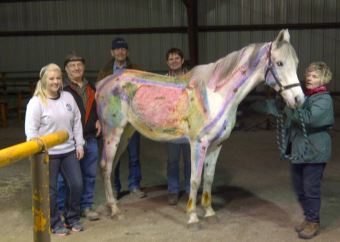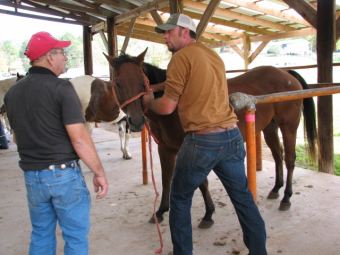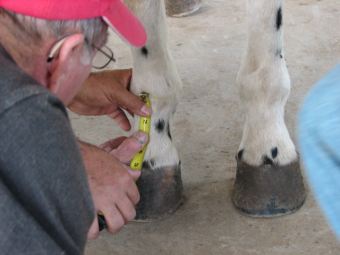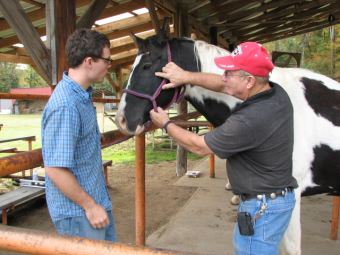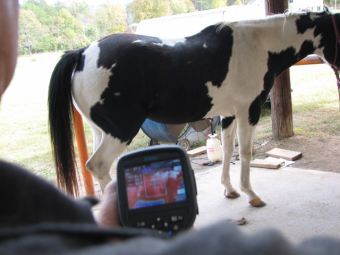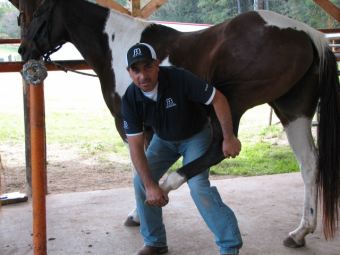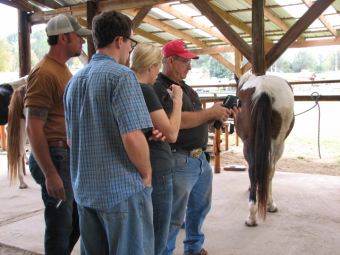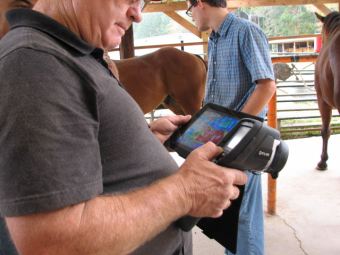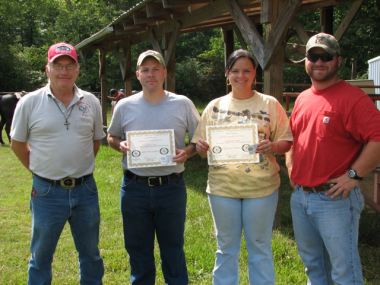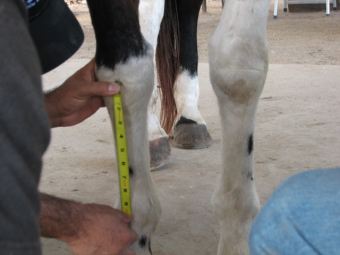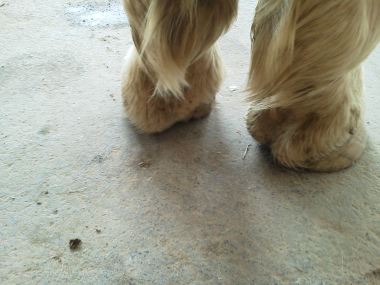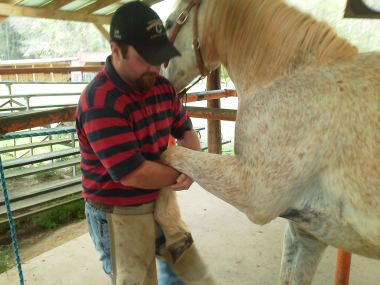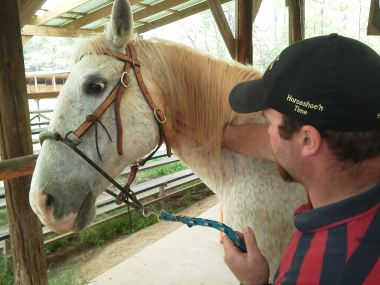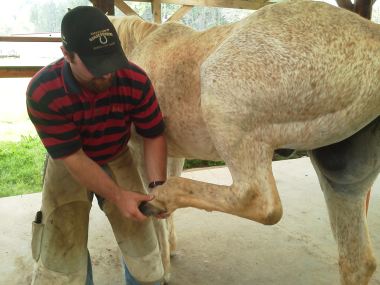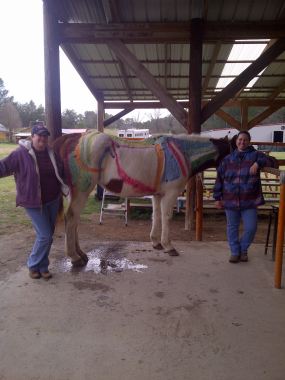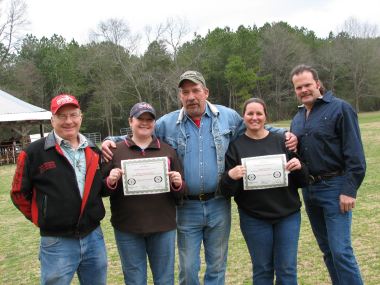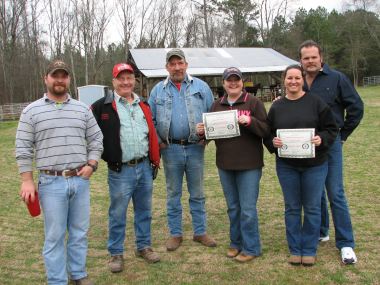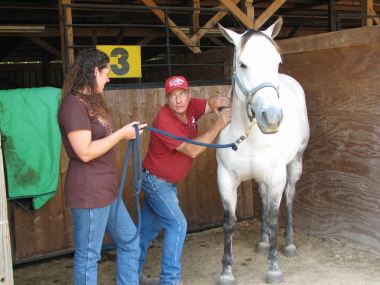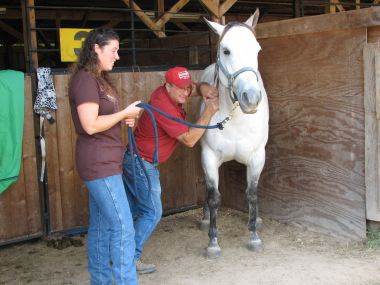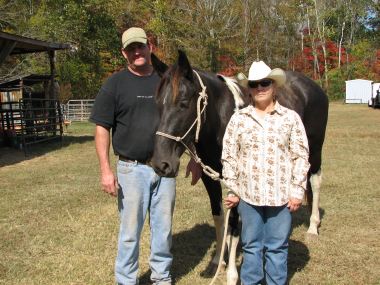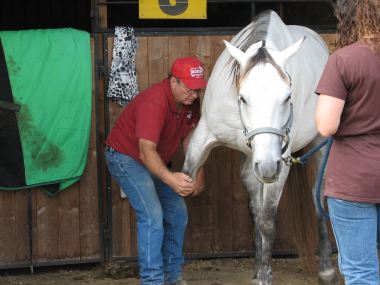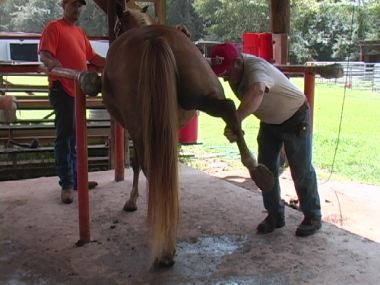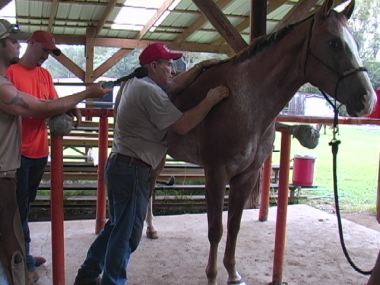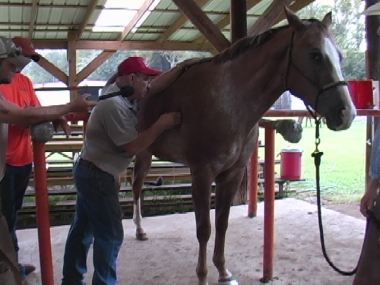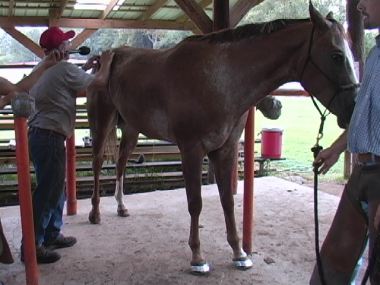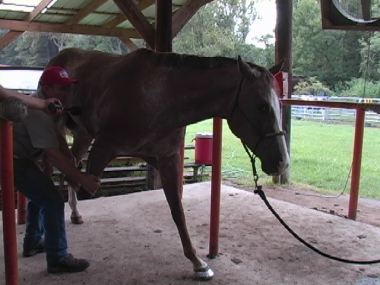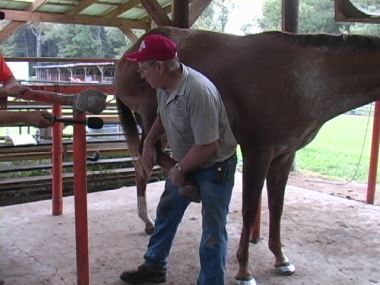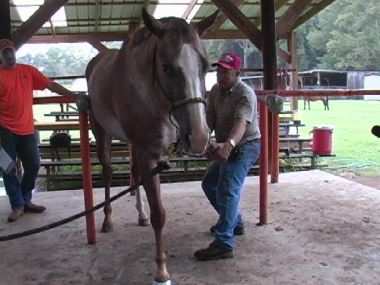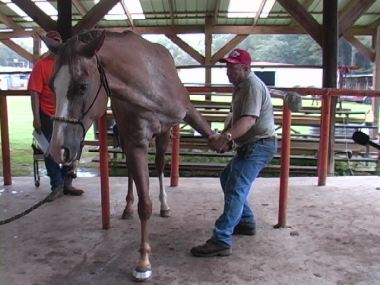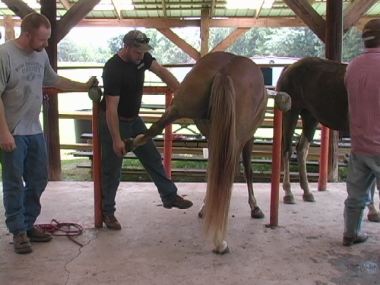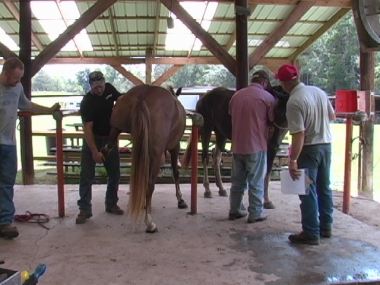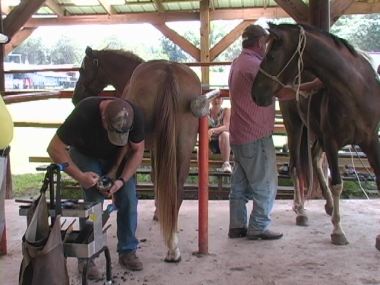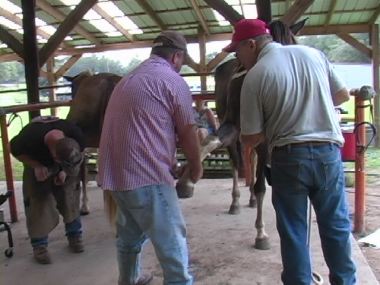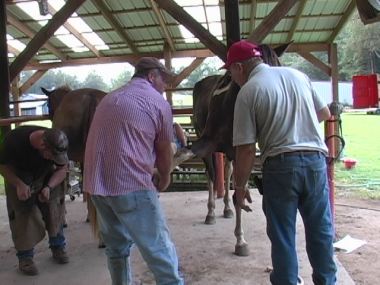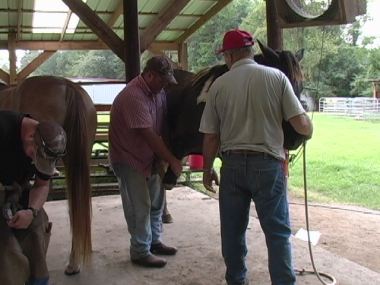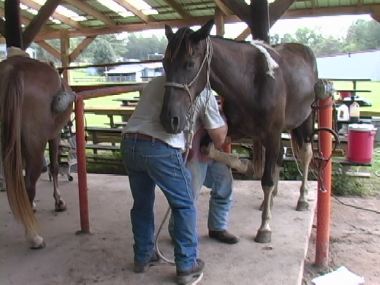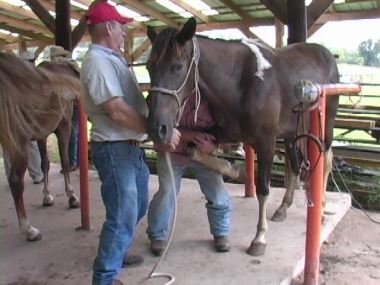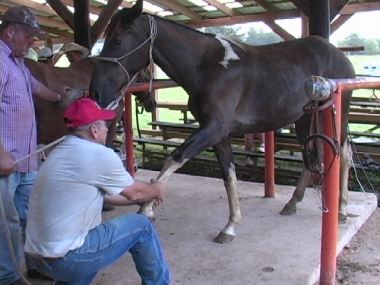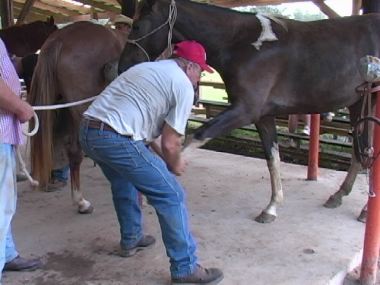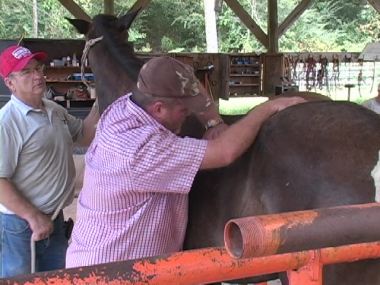Welcome to Jason Spieth of the new Michigan Horseshoeing Institute, Inc. in Litchfield, Michigan. A long time BWFA certified farrier, Master Farrier and TESTER is opening a private school this month of June, 2021 when he will also receive his One Year Associates Degree in Farrier Science from the FNRC. Jason was a graduate in 1996 from the past Michigan Horseshoeing School under Red Tomlinson, since deceased. It is about time a new PRIVATE Horseshoeing Teaching Facility opened back up to serve the northeast and all of the U.S. His teaching will follow under the FNRC DVD Grammar School of Trimming and Shoeing Horses. more to come soon with photos !
30 Years of Research, Degree in Farrier Science
30 years of research at the FNRC has allowed us to offer the only “legal” Associates Degree in Farrier Science. Farriers are welcome to apply for eligibility. Only 5 have been awarded since 2006. Scott Ledbetter was our first recipient. Three more will be announced soon. contact us at the office.
The FNRC moved to a new location in June 2020
New location on same highway: 14093 E Hwy 136 La Fayette Georgia 30728
phone (706)397-8047 and (706) 397-2116 new Cell for text: (706) 639-7007 We are still by the phones to help you !!
The FNRC moved from the Casey & Son Horseshoeing School property at 14013 when Mr. Ralph Casey, Link Casey and family sold the school and property.
The FNRC continues to have a Board of Directors of caring horse owners and farriers who continue to communicate with the farrier industry and in partnership with the BWFA (Brotherhood of Working Farriers Association, Inc. and the NEHRF (National Equine Horse Research Foundation)
The FNRC, BWFA and NEHRF share office facilities. The BWFA Farriers’ Hall of Fame Museum have plans to relocate to a more public location in 2020, halted by the pandemic, plans are to move in 2021.
The EFT is no longer offered by the FNRC. You should contact Dan Marcum in Texas for his courses at his own facility.
A Hobby Turns Into A Career
Becoming a farrier was nothing short of a spur of the moment decision for CCCHS senior, Ben Young.
Aside from focusing on school and clubs, Young runs a business as a farrier in his spare time. A farrier is a craftsman who trims and shoes horses’ hooves. Although Young had his mother as a role model in order to become successful in animal care, it wasn’t until he was fourteen that he knew he wanted to pursue a career in farrier work. After Young’s own horses started becoming lame, he started research into farriery in an effort to treat them. Success with his horses led him to decide to make a career of caring for horses.
Young states, “Eighty-nine percent of all horse health issues happen in the lower limb. That 89% is what I am trained to treat.” After being certified with The Brotherhood of Working Farrier Association, or BWFA, Young began working as an apprentice with more experienced farriers.Young also received his EFT, or Equine Flexion Therapy certification. The EFT certification allows Young to perform therapy on horses in order to keep them more flexible and comfortable, aligning the spine without chiropractic adjustments and addressing the muscles that control the skeleton.
It wasn’t until 2017 that his work started to flourish, causing him to work harder than before. More recently, Young has submitted and completed research regarding, “Navicular,” or, “Navicular Syndrome.” Navicular Syndrome, also known as Navicular Disease, most commonly describes an inflammation or degeneration of the navicular bone and its surrounding tissues, usually on the front feet. This disease can lead to significant and even disabling lameness. Young’s research may prove paramount in treating this serious disease.
Despite his age, Young overcame the doubt he faced, pushing forward with the encouragement of his instructor, certified Master Farrier and Master Educator, Link Casey. When asked if he would recommend working as a farrier to others, Young replied, “I would for a certain type of person.” According to Young, being a farrier is one of those careers where “You can set your own hours, or work when you want, as some people put it. Even though I don’t completely agree with that statement, I work twice as hard because of it; it is worth it in my opinion. But anyone that is successful working for themselves would tell you the same thing. If you can manage your time extremely well and aren’t afraid to put yourself out there to make tough business decisions, then I would highly recommend it.”
Working as a farrier has bettered him, in the sense that he has the satisfaction of being able to help people and horses. Young states that his favorite part of working as a farrier is, “Being able to see people with a lame horse and have it sound again.”
By: Katie Sudberry
https://coffeepresschs.com/1177/news/archives/a-hobby-turns-into-a-career/
The Winning Horse
The Winning Horse
From the Farriers’ National Research Center & School, La Fayette, Georgia
In 1988 we began an all-out study, on not just sound shoeing, but maintaining the sound horse to allow him to perform at his peak. Horse owners began bringing us their horses to evaluate. Many at one time had the chance to be champions whether it be in cutting, running barrels, hunter jumper events, racing, and on and on. In our evaluations, we would discover that the most important part of the horse had been overlooked and neglected. These horses had received too many improper trims! And further evaluations showed that neither the amateur person trimming, nor the owner knew what they were trying to achieve with each trim or shoeing their particular horse.
The hoof carries the entire weight of the horse. So, it must be perfectly balanced, or as close as humanly possible, just like an athlete would require achieving their maximum performance. “Balance” has been mis used in many forms in our industry. Many horse owners become offended when we tell them that everything, they do is important to the hoof and they discover they did not know quite as much about their horse as they thought they did. So, we started hosting clinics at the FNRC and offering valuable information for owners otherwise not available from any other “hands-on resource.”
Whether training a champion or gentle trail horse for the kids, everything comes into play, from lunging correctly, proper saddle fit, feeding and nutrition. There is more to the science of shoeing than flattening the foot, nailing the shoe on and making it look pretty. Improper trimming and shoeing will eventually cause the bony structure to become out of alignment. The horse will be sore due to the unbalanced toe, heel and leg lengths. This right here is the most common and most serious problem occurring to horses today. As we have said before, the main reason for shoeing the horse is; “to keep the bony column of the leg in alignment, wherein, when the foot strikes the ground, the entire bony column, including the spine, equally absorbs the concussion.” This is the basis of our evaluations and studies here at the Farriers’ National Research Center and School.
To achieve this goal, we must start from square one, by properly feeding the broodmare, then properly feeding the newborn then on to evaluating and properly trimming the youngster. The entire bony structure of this newborn is growing rapidly and to alter it’s body by improper trims or neglect trimming altogether will create big problems down the road. And there are thousands of youngsters who never see a farrier until the owner wants a set of shoes around two years old. This too is by far one of the most common problems seen in horses today.
Our moto is: The Farrier is the most important equine professional for the overall health of the horse in the equine industry. It is very important for horse owners to seek out the education about the farriers’ job and the maintenance plan suggested to keep a horse sound and healthy. Since 2002, horse owners have been fortunate to have access to the only farrier research center in the U.S. dedicated to studying farrier science operated by caring horse owners and farriers. We continue to share this education in courses and clinics for owners and one of the first ongoing continuing education programs available for farriers.
Horse Owners are welcome to bring their horses to the FNRC for their trimming and shoeing needs and watch, listen and learn about their own horses while the farriers do their work. Lots of conversations, demonstration, explanations with YOUR Horse in an educational environment. Farriers are normally horse owners first who want to find a better farrier in their area, provide the right care for their own herd and enjoy it so much, make a profession of it. There is always a need for more qualified farriers or just owners who want to buy a better horse, ride a better horse and enjoy a better horse!
“Happy Horse = Happy Owner!”
….and better yet,
“A Happy Horse Owner Makes a Happier Farrier”
For more information, contact the
Farriers’ National Research Center and Horseshoeing School, Inc.
La Fayette, Georgia (706)397-8909
www.farriersnationalresearchcenter.com
(Located in the community of Villanow near the Pinhotti Trail, Hwy 136)
Farrier & Wrangler Wanted On Colorado Ranch
Howdy Ginger,
We have contacted you in the past and you were kind enough to post our job opening for a farrier/wrangler at your school. We are again looking for one additional farrier to add to our staff this summer. Here is some additional information on our ranch and the job.
We have a summer guest and working ranch in Colorado and we are looking for a recent or soon to be graduate farrier to work at our ranch this summer.
We own around 120 head of horses and have found that we can provide an excellent opportunity for a newly trained farrier to get under a number of horses and further develop their skills and training. This gives them a good head start to begin their own business.
This position we are offering also entails wrangling horses, teaching horseback riding, guest entertainment and a number of other activities all based in a great mountain environment. All of our employees live and work on the ranch. The position can pay between $11000 to $14000 for the summer with minimal expenses. My family has been in business for 40 years and have had a number of horseshoers get their start with us over the years. They would be working with other experienced farriers including ourselves. We do have two other full time farriers on staff so we do not expect this candidate to take the load of the entire horse herd by themselves.
If you have any students who might be interested in a great summer here in the Colorado mountains have them contact us at 1-800-845-2292 and speak to Justin or Ken.
Our website is www.drowsywater.com for reference and we have an online application on the website. Feel free to call us with any questions.
Thank you for your time.
Justin Fosha
Owner Drowsy Water Ranch
DROWSY WATER RANCH
The Fosha Family
PO Box 147
Granby, CO 80446
970-725-3456
info@drowsywater.com
Veteran Choosing A New Career!
Graduate Farrier Cody Barns, A post 9/11 Veteran choosing a new career from the Casey & son Horseshoeing School and Farriers National Research Center in Georgia. Here with Link Casey (R) school owner and Instructor.
Merry Christmas!!
May your family be blessed with the love and peace that is
CHRISTMAS!
Horse Pastures, Cool Weather And Laminitis Explained
Horse Pastures, Cool Weather and Laminitis explained
Cool spring weather brings in new green grass but what about the fall? Those cool weather days also bring in new green grass. So how does that relate to the horses’ diet?
Most horse owners know about the dangers of eating too much new spring grass, but have you thought much about the fall weather grass? Yes, horses can founder on both. With the abundance of rain and sunshine this year, you may find yourself mowing your lawn every 5 days. How about your pastures?
Fall is the time to fertilize and lime your pastures. If you do, keep your horses off for several weeks, not just days. We are thankful for all that good green grass, but with it comes limitation for horse grazing.
It has been known for many years that lush pastures can cause laminitis and founder in susceptible horses. According to a popular farrier publication editor, Fran Jurga, scientists have identified fructans as the culprit in grass that causes horses to founder.
Explanation:
During the day, plants carry on photosynthesis and produce sugar. In grasses, these sugars are stored as carbohydrates such as sucrose, fructose and fructans. During sunny days, horses can be grazing on pastures that are high in carbs. At night, the plants use the carbs to produce plant tissue. Therefore, carb levels are lowest at dawn. Fructans are a form of carbohydrate stored by grass. Seeds store energy as starch, grasses store energy as fructans.
Problems can arise when stress slows the growth of the grasses and the plants do not use the carbs produced during the day. This condition can develop during the SPRING (and FALL), when falling nighttime temps and frost can shut down the plants. If the frosty nights are followed by warm, sunny days, fructan levels can accumulate quickly in the grass blades. Grazing grasses high in fructan levels can trigger a situation in horses very similar to carb overload caused by overeating grain. Increased carb and fructan levels can set off a series of metabolic disturbances in the horses’ intestines, potentially resulting in colic and laminitis. Until more research is done, it appears that fructans are the likely cause of grass induced laminitis or founder in horses.
Courtesy of the Tribute Equine Nutrition:
Laminitis is the inflammation of the sensitive structures in the hoof called the “lamellae.” The lamellae hold the coffin bone tight within the hoof horn. This condition is extremely painful and can lead to rotation of the coffin bone known as founder. A common cause of laminitis is overconsumption of pasture grass, especially when the grass is actively growing, typically in the spring or after a good rain – AND IN THE FALL. Nutritional causes are related to high intake of sugar and starch also from grain mixes high in cereal grains and molasses.
Minimizing the horses’ sugar and starch per meal is the best way to prevent or manage laminitis. Once a horse has signs of laminitis, nutrition will always be an important factor in continuing a long healthy life.
Dr. Dan, the Natural Vet of Tennessee describes it this way:
Just so you also fully understand – molasses IS SUGAR. Both cause insulin spikes, subsequent insulin resistance from over-production by the body, hypothyroid, Cushing’s horses, etc. Sugar highs and sugar lows are the culprits. Feeding corn and sugar at the morning meal is like us eating donuts and candy for breakfast. These high sugar levels wear the pancreas out. The pancreas produces insulin to handle the sugar and then later in the day, the sugar low causes tremendous stress on the body because the body is starving to death. This hypoglycemia also wears out the adrenals (glands that handle stress) and eventually hypothyroidism, Cushing’s (from over production of adrenal glands), and laminitis, as well as metabolic issues of all types can results. Heck, the body is “just flat worn out” from the stress.
All commercial feeds are produced to “hit the middle of the road’ when it comes to vitamin and mineral fortification.
Buck McColl of Mobile Milling Bio-Zin:
Read your feed tag carefully. Have your pasture soil tested. Compare the quality of your pastures to what your horse really needs in a supplement. Ask your farrier about your personal horse’s hoof quality.
From the Farriers’ National Research Center
Some horses react to all the above, and some don’t. You need to watch out for those easy keepers who seem to always be heavier. Going back to helping the hooves stay dry, put your horses in a dry lot or stalled overnight, let out about noon till 9pm or dark and they will have better hooves and stay on a better-balanced diet as well.
We offer a Nutritional Information Class and DVD for our farrier students and horse owns are welcome. The information comes to us from many Professional Equine Nutritionists who study the subject for living. It is part of our daily business, helping horses stay healthy with healthier hooves to stand on.
After all…”A Healthy Horse = A Happy Owner”
www.farriersnationalresearchcenter.com Villanow, Georgia (706)397-8909 for appointments
Check out our other “Healthy Hoof Care Articles for Horse Owners”
Saddle Fit Class
Our Farrier Education includes clinics on "How To Better Serve Your Customers" and improve your overall horse knowledge. Link Casey, offered a "Saddle Fit Class" for a ladies riding club. Enjoyed by all who were already experienced riders with good horses. One needed an all new saddle & pad to fit properly and others just needed an adjustment or two. The infrared FLIR camera used showed the 'inside' of the story. What might be blamed on shoeing could actually be a saddle fit problem and vica-versa.
Click here to check out slideshows of the course!





